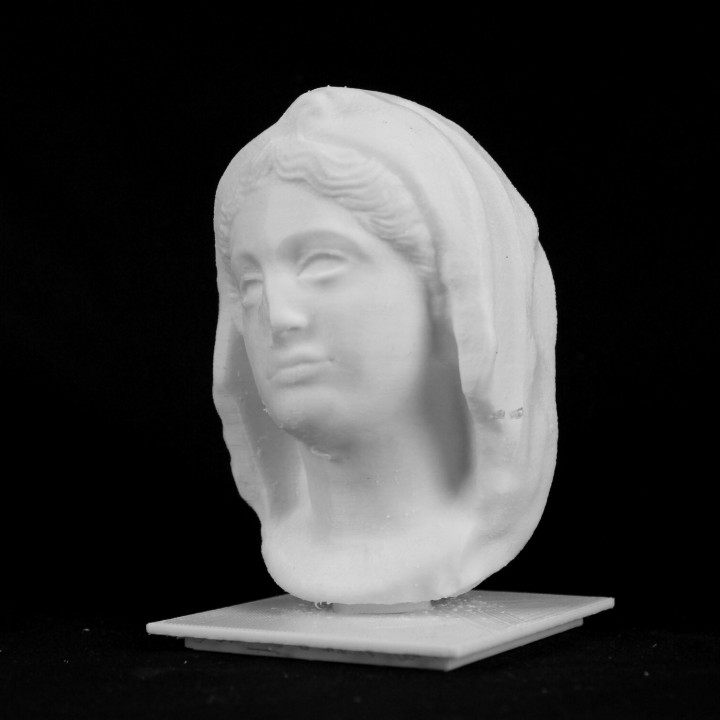
Veiled Woman at The Louvre, Paris
myminifactory
This head was unearthed on the island of Anaphe in the Cyclades group of islands. It originated from a funerary statue that depicted the deceased wearing a veil. The head was carved separately from the body, and then a stone tenon on its base was inserted into a mortise in the bust - a technique widely employed in the Cyclades and Asia Minor. The high-quality marble sculpting of the late Hellenistic period is evident in the delicacy of this young woman's face, which remains remarkably well preserved. Discovery on the island of Anaphe This woman's head was brought to light in 1823 on the island of Anaphe in the southeastern Cyclades, along with a statue of a clothed woman. The collector Guillaume Alby, who served as French Vice Consul in Santorini, purchased both pieces. The head eventually became part of the Louvre collection in 1898, courtesy of Madame Faugère's bequest. A veiled young woman This delicate face with its youthful features bears resemblance to certain early Hellenistic creations from the workshop at Kos. It showcases the development of marble craftsmanship in Greece during the second half of the third century BC and serves as evidence of that period's prosperity. The woman is depicted wearing a veil; her eyes are half-open, and her thin-lipped mouth reveals a slight smile. Her hair, styled in fine, sinuous plaits, is freed from the veil and forms a halo around her oval face. A funerary statue Originally, this head was placed on a funerary statue depicting the deceased. It was carved separately from the body, and then a stone tenon on its base was inserted into a mortise in the bust. This technique was widely used in the Mediterranean basin, particularly in the Cyclades and Asia Minor. The same system was employed for the heads from Tralles and Apollonia in Epeiros, also part of the Louvre collection. In certain cases, the bust was carved ahead of time, and the head was added at the time of death. This object is part of "Scan The World". Scan the World is a non-profit initiative introduced by MyMiniFactory, through which we are creating a digital archive of fully 3D printable sculptures, artworks, and landmarks from across the globe for public access. Scan the World is an open-source community effort; if you have interesting items around you and would like to contribute, email stw@myminifactory.com to learn how you can help.
With this file you will be able to print Veiled Woman at The Louvre, Paris with your 3D printer. Click on the button and save the file on your computer to work, edit or customize your design. You can also find more 3D designs for printers on Veiled Woman at The Louvre, Paris.
